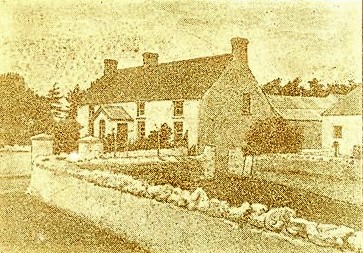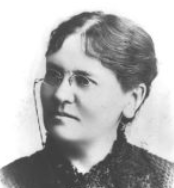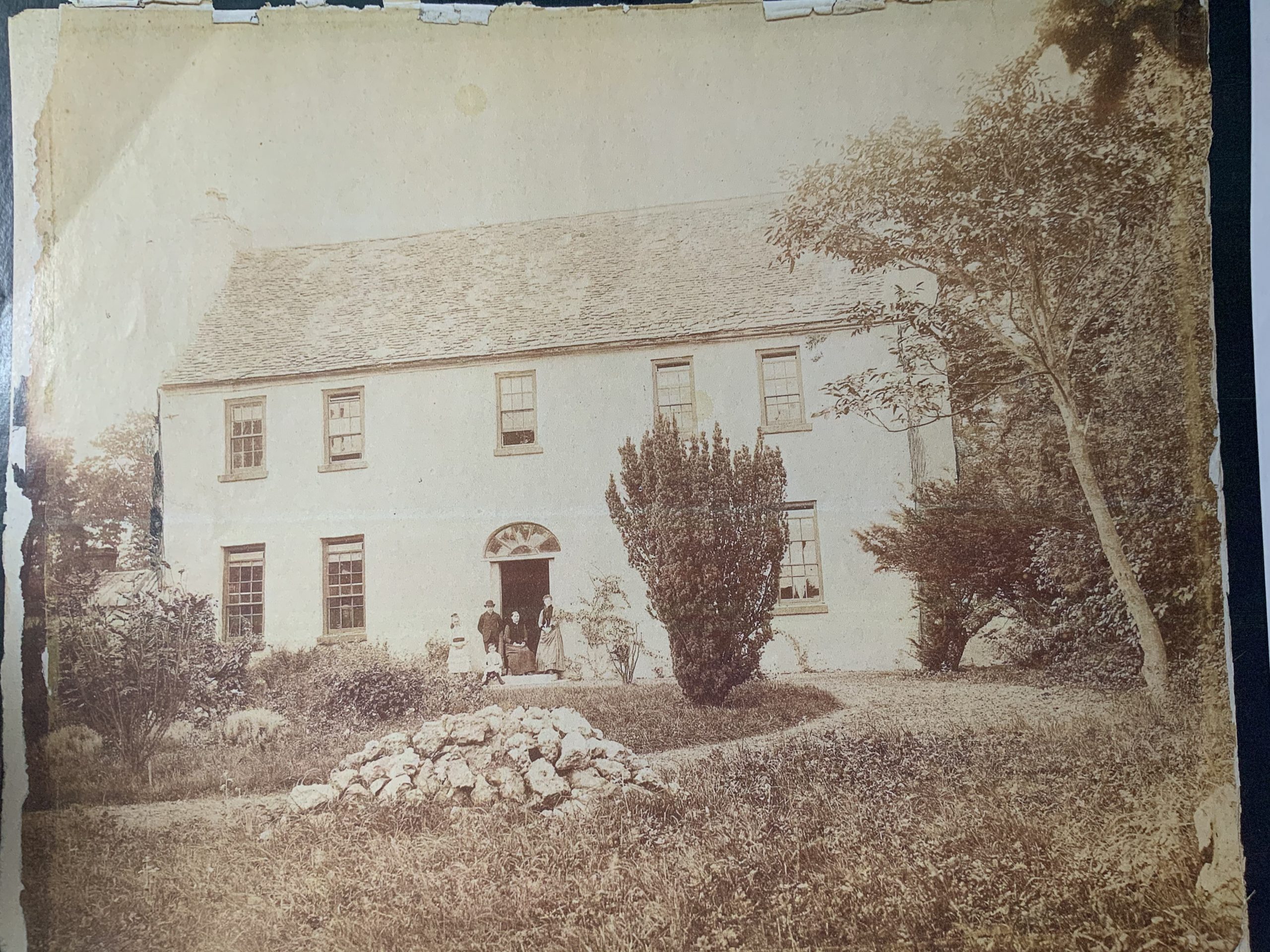The family tradition is that the two orphaned sons of Lieutenant Colonel Thomas Carroll were transported to the north of Ireland and handed to the care of two different families. One was Episcopal and and the other Presbyterian.
The brothers, John and Thomas, were probably born somewhere in Ely O’Carroll about 1680. The story of John Carroll remains a mystery. We have not found any descendants of his, though Robert W. Carroll of Cincinnati was convinced that he knew one – a Mrs Dobbin née Carroll.
We don’t know the name of the family with whom Thomas Carroll lived nor why they accepted the orphan. Perhaps they were a childless couple who needed help on their farm? Thomas appears to have thrived and perhaps inherited their farm. All we know for certain is that he was a member of the Presbyterian congregation in Moira and that he married Elizabeth Hogg.
THE CHILDREN OF THOMAS CARROLL AND ELIZABETH HOGG
Thomas and Elizabeth had two sons, John and Edward.
John Carroll b.1708 was a Presbyterian minister. He married Sarah Greer. They had a daughter named Elizabeth born 1734 who died aged three.
Edward Carroll 1712-1770 was brought up as a Presbyterian and worshipped at Moira, where there were two congregations – subscribing and non-subscribing. We don’t know which he attended. Edward lived in a period of relative peace in Ireland. When he wrote his will in 1769 he was hopeful that his family would continue to live on the farm which the Carrolls had occupied since 1729. His children were born in the sturdy stone homestead built at Creenagh, in the parish of Magheramesk. The house was still standing into the twentieth century.
Edward’s children probably didn’t pay much attention to the origins of the Carrolls let alone the circumstances which led their grandfather to be transported to the North. However, the traditions were passed down to his descendants who emigrated to the USA. Robert W. Carroll of Cincinnati wrote to his cousin in Cork on 12th October 1878:
“Now the tradition, agreed upon on all hands, was that Colonel O’Carroll, who commanded a cavalry regiment in the army of King James II, at the battle of the Boyne, in 1690, was killed; that he left two sons, boys of tender years; that these two sons were sent to the North to be brought up; that one of them was taken by a Presbyterian and the other by an Episcopalian, and brought up in their family, the one as an Episcopalian the other as Presbyterian; that the Presbyterian was our ancestor and the Episcopalian the ancestor of Mrs Dobbin. The tradition further is that the name of the family was O’Carroll, the O being dropped by these boys, thus educated as Protestants, and that the Colonel killed at, or about that time of, the Battle of the Boyne, was a Catholic. Further, the tradition is that the family came from Kings County.”
Edward’s purpose was to build a stable life for his family and prosper on the farm inherited from his father. In 1738, he married Sarah Bell who came from a Quaker family who attended the Friends meeting at Ballinderry. Although she had ‘married out’ she remained as a Quaker, no doubt reassuring the meeting that her children would be brought up as Quakers. Edward remained a Presbyterian member in Moira until late in his life.
All their children were brought up as Quakers. Apart from Thomas who died in 1759, they were named in Edward Carroll’s will made in December 1769.1 His single daughters were left £30 on their marriage and a cow to Elizabeth who was already married. It was Edward’s wish that the family should continue to live and work together as they had done in the past. He left a complicated legacy tying his sons to the land. However, all the brothers appear to have left the area by 1801. The sisters mostly married local men and remained in the area. Elizabeth married Jared Davis a Friend who had a large farm and an impressive linen factory. Isabella married Robert Williams a neighbouring farmer and linen draper. Deborah married out to William English a malt dealer who lived near Lisburn. Sarah married Richard Bell a Friend and they lived in Trummery, as did Nancy who married Samuel Johnson, also a Friend.2
Edward’s vision for his family’s future was not shared by his son John who left the family homestead for the City of Cork in 1765, probably against his father’s wishes. The receipt of his father’s legacy was dependent on him returning to live under his mother’s roof. There were new opportunities in the City of Cork and much investment was being made by Quaker families. There is no family tradition about whether John returned to co. Antrim to claim his inheritance.
By the time Sarah Carroll died her youngest son, also named Edward, was the only one of her children still living in the house with her. He was working as a farmer and linen draper.
The times were changing in the decades after Edward’s death in 1770. It was a time of revolution – 1776 The American Revolution – 1789 The French Revolution – 1798 The Irish Revolution. Radical change in the government of Ireland seemed possible whilst the government in London was distracted by war with Napoleon. An open, radical organisation, the Society of the United Irishmen, was formed mainly by Presbyterians from Belfast. The minister in the Presbyterian church in Moira was a volunteer enthusiast.3 By 1796 the society had become a secret society which no longer disavowed achieving its aims by violent means. At the end of 1796 came the French invasion at Bantry Bay, defeated by the weather rather than armed resistance. This episode triggered a ruthless clamp down in Ulster as English troops searched for weapons. It was not until 1798 that open rebellion broke out which was swiftly quelled by government militias. The atrocities committed during the rebellion were followed by government retribution in the main areas of the fighting – Antrim, Down, Wexford and Wicklow where the people were treated with great brutality and cruelty. “Many innocent people were put to death without trial, homesteads were burned, and property was destroyed. Hundreds fled to America.”4
It is not known how the Carroll family was affected by the awful atrocities that were committed in their neighbourhood during and after the rebellion. Their Quaker beliefs gave them no protection from government soldiers, let alone the rebels. The only mention of these times was the memory Sarah Carroll took with her to America; she later recorded that she had seen the heads of Irish Nationalists stuck up on poles in the public square in Lisburn.5 The local economy was devastated and Edward probably despaired at making a going concern of the farm. By 1800 he had sold up and made preparations to emigrate to America.
THE CARROLL HOMESTEAD
The homestead was in the Townland of Creenagh, adjacent to Trummery. Robert W. Carroll wrote to Joseph Hatton Carroll in December 1882:
“The family homestead was a stone house in Trumera (or Trumry or Trummery) variously spelled, which was a Townland between Moira and Lisburn. The Carroll homestead was about one and a half miles North East of Moira and some four miles West-South-West of Lisburn. Your cousin James Carroll wrote me, some ten years ago, that he had lately passed by and seen the house, yet standing. It is on the old turnpike road from Armagh to Lisburn and Belfast, and my father said, and others have stated, that it is in a beautiful country, and handsomely situated. Your grandfather, and my father and grandfather were born in this house, and my family occupied it until they immigrated to this country early in the year 1801. The place was a farm of about one hundred acres, on which were several tenement houses, a blacksmith’s shop etc. My grandfather (Edward Carroll) was embarrassed financially by the condition of the country, as left by the rebellion of 1798 and thereabouts, and I believe, by himself being involved by endorsements and possibly by a lack of thrift. I fear this last characteristic has descended to his children and grandchildren – at all events the money making talent has not been developed among us, and we are generally poor.”

The house no longer exists though there are modern houses on the site which is opposite the small quarry on the Halfpenny Gate Road, the old turnpike road. The quarry is described in Edward’s will in 1769 as ‘the ten acres called the Rock Land opposite’ his house which had houses on it occupied by Richard Gilpan.
In 1884, Miss Abbie Whinnery, wrote to her cousin, Robert William Carroll in Cincinnati, recording her visit to the homestead. She was accompanied by her father, Dr. James Carroll Whinnery (whose mother was Nancy Sally Carroll).

Royal Avenue Hotel, Belfast, July 13 1884.
My dear Robert,
I know that you will be glad to learn that we have found the old homestead and in excellent repair. I hasten to tell you the whole story. We arrived in Belfast at about 11.30 am yesterday. Being advised by the head Porter at the hotel to drive to the police barracks at Moira and then ask advice as to the best way to search for the old house, we secured a jaunting car and as soon as we had lunched set out. We soon found ourselves in the midst of an enchanting landscape which grew in beauty as the distance from Belfast increased, which remark I feel to be invidious for the whole country hereabouts is so beautiful as to excite delightful admiration.. As we drove southwest from Belfast over a very fine road bordered on each side by thrifty hawthorn hedges and a range of hills which our driver called “the Moreen Mountains” (Mourne Mountains) bounded the view on our right. On the left the country opened out indefinitely into country seats and farms; the fields are divided by innumerable hedges, while clumps of trees and several small groves dotted here and there, added richness to the scene. As we approached Lisburn the hills were left behind, the view enlarged on the right, while on the left, in the very far distance the shoulder of the Mourne Mountains clothed in a purple haze was turned warmly towards us. The sun shone brightly with a genial warmth; the earth was teeming with verdure; little white cottages were scattered along the roadside with here and there a farmhouse, white distant villages and church spires among the trees would occasionally glide into the panorama. When we admired the fine crop of hay; the wonderful wealth of the oat fields; the perfection of small amount of wheat we saw growing and even the heavy yield of grass our driver told us this was only a second or third class year because of the cold winds in May and of the want of rain in June. If such be the case it is scarcely possible to imagine the fullness of vegetation in a first rate year. Everything grows to a fine perfection. There is no rank overgrowth; no coarse fibre; every leaf seems to be evenly developed and everything is graceful.
Seven miles from Belfast we passed through Lisburn, a long town apparently built in one street consisting principally of respectable and in some cases of rather stylish dwellings with one very large and elegant mansion the residence of Sir Richard Wallace. We went on by the new Lisburn road to Moira which is a very ancient looking village. The police sergeant at the barracks came out to speak to us and called two or three persons who were near at hand, and we had not exchanged many sentences when we were put on the right track by a young fellow who advised us to call on Mr. Isaac Bell of Trummery House. As soon as father heard the name he said “we are all right now”.

So we drove back about 3⁄4 mile to Trumera House where we were hospitably received. Isaac Bell is the son of the Isaac Bell of whom Grandmother used often to speak. I suppose you know more about the relationship between the Bell and Carroll family than I can tell you. Isaac who is sixty years of age has a very pretty young wife and seven fine children. He lives in a very fine large house and cultivates 150 acres of land. He is an exceedingly stringent orthodox Quaker, a well-informed man and evidently held in high esteem in his neighbourhood. He said he could direct us to the very house where “old Ned” used to live, but urged us to take tea before starting; so it was 5.00 pm when we left his house. James Bell a lad of about 13 years accompanied us to show us the way. As we turned into the old Lisburn road we noticed some dark clouds in the sky a sign of rain. We drove for a mile over a very good solid road, passing many wretched cottages which are so numerous here, and one or two decent farmhouses and drew up before a very substantial stone house a storey and a half high, 45 feet long and 21 feet deep.
The walls are covered with a rough finish of cement and gravel, and whitewashed. The roof of thatch is in keeping with the little old fashioned windows in the upper storey, consisting of four panes each, the lower windows are much larger. The entrance which I can only describe as an enclosed portico with a tiled roof is evidently modern although of the same material and finish as the house. A tasteful well kept flower garden in front is enclosed by a new stone wall. A new stone barn just east of the house with a horse yard wall surrounded a row of very old but well-preserved outbuildings, stretching out for sixty feet from the back of the house, complete the establishment.
1 A copy of the will was made in 1887 for Thomas Greer MP and is held in the Greer papers at PRONI reference D/4121/B/2/1/1-28
2 As recorded by Mary Carroll Bewley of Cincinnati. Copied by Joseph Hatton Carroll in his blue notebook.
3 David McFarland, Finding Footprints – A history of Moira co.Down, 2019, page 50.
4 Prof. Berkley’s Short History of the Presbyterian Church in Ireland, quoted in David McFarland ibid p.129.
5 C.C.Randolph, Family History, Salem, Ohio, 1908.page 30.